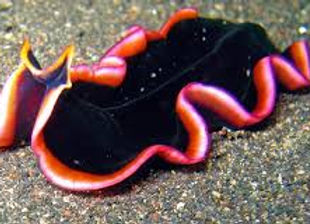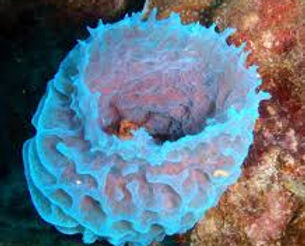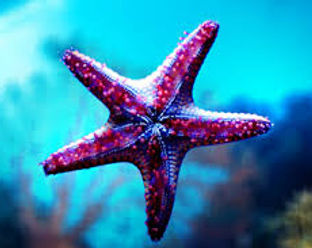







Porifera
Cnidarians
Platyhelminthes
Charley
Nelson
p.4
Mrs.Lietz
and
Mrs.Hiedorn
common name: Azure vase sponge
scientific name: Callyspongiapiciera
Habitat:coral reefs, built on walls often spotted in florida and the caribeans
body type: asymentry invertebrate
Facts:1. can grow up tp 7inches
2.elaborate system of meandering grooves
3.13.5 cm in diameter; vents up to 6.5 cm in diameter. Pits and grooves 0.5-1 cm in depth, 0.5-1.5 cm in diameter

common name: Box jellyfish
scientific name: cuboza
Habitat: Northern Austrailia to the Indo pacific
Facts:
1. eats by acid that disolves the food
2.They have 3 tissue layers
3.10,000 different Cnidarian species
Body type : raidially symmetry and Invertebrate
common name: Flatworm
scientific name: platyzoa
Habitat: ponds rivers and any place with fresh water.
Facts
1.20000 different species of Platyhelmthes
2. Can grow to be longer than a school bus
3. Regenerate
Body type: bilateral and Invertebrate


Common name: Star fish
Science name:Asteroidea
Habitat: Ocean connected to walls of coral
Facts:
1.Walk on hundereds of tubes for feet
2.13,000 species of Echininderms
3. Can seperate into 5 parts
Body type: symmetry: radial invertebre
common name: crab
Science name: Brachyura
Habitat:sand or burrows
Facts:
1. Known as decapods for having 8 leggs
2. Expo skeleton is made of chitin
3.have adapted to every ecosytem
body type: Bilateral symmetry , invertebrate

Annelids
common name: Leech
Scientific name: nirudinea
Habitat: marshes rivers and ponds
Facts:
1. 32 segments
2.The segments are not divided internally, allowing the leech to store large amounts of blood.
3. Leeches live off of blood as there source of food
body type: symmetry is bilateral
they are invertebrates
common name: cuttle fish
scientific name: sepida
Habitat: marine animal so oceans world wide
Facts:
1. Highest intelligence of the invertebrate
2. Amazing defenses of different kinds
3. They actually have shells
Body type: symmetry is bilateral invertebrate

Nematoda
Common name : Round worms
Scientific name: Caenorhabditis elegans
Habitat: every ware other than the in the sea / ocean, mostly found underground or in walking ways after the rain
Facts:
1.sucessfully adapted to all ecosystems
2. considered paracites
3.1,200 known Nemada species
body type: symmetry is bilateral
worms are invertebrates


